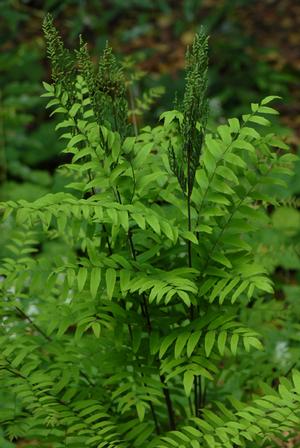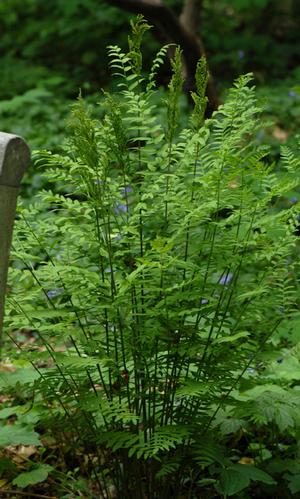Osmunda regalis var. spectabilis
Common: royal fernOsmunda regalis var. spectabilis LP32 - 32 per flat
- Height: 4'-6'
- Spread: 2'-3'
- Spacing: 18"
- Hardiness Zone(s): 2-10


Osmunda regalis var. spectabilis LP32 - 32 per flat

Grow in shade or part sun in moist soil rich in organic matter. Water well on planting and regularly until established.
Royal fern is truly one of the most distinctive and spectacular bold-textured deciduous native ferns with its light green, leathery leaves and graceful architectural stature. With adequate moisture, royal fern can reach 6' tall and create a lush, tropical feel along a stream or beside a pond. Osmunda regalis var spectabilis has broad fronds with large, well-separated pinnae and upright fertile fronds that change from golden-yellow to green to brown later in the season. Easy to grow and handles moist shade with delight, royal fern is an ancient deciduous species that is found on all seven continents.
For best performance, royal fern should be grown in part shade to full shade in moist soil, rich in organic matter. When plant is first planted, water well and continue to water until well-established. O. regalis var spectabilis grows as far north as Ontario and as far south as Florida through the Midwest until Texas. It naturally occurs in the wet-mesic to hydric soils of swamps, riparian forests, and shorelines.
Royal fern has a long lifespan and is a slow and steady grower, reaching up to 100 years old if placed in a happy situation. Osmunda spp. provides subsistence for a borer moth species but is most notable for creating habitat for vertebrate animals when planted en masse. With its fibrous root systems, it is helpful for erosion control especially along stream and pond banks. The plant does not tolerate fast moving water well.